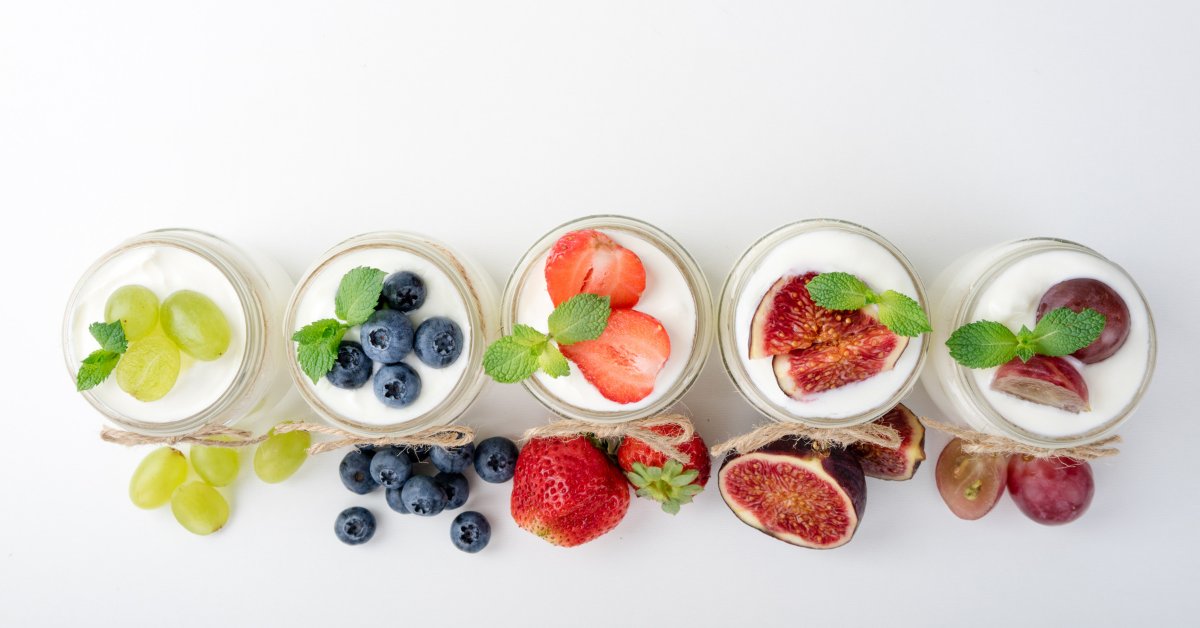Probiotics have emerged as a popular health food in the food industry due to the growing demand for functional food properties in this era.
Guest post by Joo Shan Ooi
Probiotics are defined as live microorganisms which when administered in adequate amounts confer a health benefit on the host. Functional food products such as yogurt, are composed of bioactive compounds, which are the live bacterial strains that are believed to offer physiological health benefits beyond its nutritive role. These live bacteria are also known as gut friendly bacteria as it is known to influence the composition of the intestinal microbiome. Its major health attributes include improved gastrointestinal microbiome, strengthened immune system, alleviating high cholesterol levels and reducing the risks of bowel diseases such as IBS and colon cancer. Probiotics and prebiotics function hand in hand, whereby prebiotics function as a food source for the good bacteria found in the gut while probiotics are the actual live organisms found in the gut that feed off of prebiotic sources.[1]
Yogurt is a staple ingredient because of how versatile and convenient it is to use in different recipes. Bonus point of implementing yogurt into your daily meals, a healthy gut!
Probiotics are originally derived from fermentable milk, which have been marketed in various products including yogurt, cheese, beverages, supplements and even non-dairy products. For those who are lactose intolerant, fret not! There are ample probiotic products that are dairy free therefore are lactose free. To avoid digestive discomfort, it is best to avoid dairy products that contain high amounts of lactose, however, it is suggested to consume some specific dairy foods with limited amounts of lactose to reduce the lactose sensitivity in your digestive system, thanks to our gut microbiota adaptation![2]
Fun fact: the fermentation of yogurt produces the enzyme lactose, which typically digests some of the lactose therefore the lactose of the yogurt is digested more easily than other dairy products by those who are lactose intolerant.
Here are some of my favourite ways to incorporate yogurt into my dishes:
Chia seed pudding
(Image credit & recipe by bakedbree.com)
Chia seed puddings are a great option for breakfast. This meal can satisfy your hunger cravings for a longer period of time due to the abundance of dietary fibers from the chia seeds and both the yogurt and chia seeds contain adequate amounts of protein which can keep you fuller for longer.
Smoothies
(Image credit & recipe by Dinner at the Zoo)
Smoothies are a great way to incorporate yogurt because it modifies the texture and flavor of the smoothie itself. Yogurt adds a touch of creaminess therefore making your smoothie thicker. As yogurt contains a good amount of protein and calcium, it can definitely increase the nutrient density of your smoothie.
Frozen yogurt popsicle
(Image credit & recipe by cookieandkate.com)
Yogurt popsicles are a great idea for desserts and are gluten free and kid-friendly. This is also a healthier substitute for ice cream as it is lower in fats and sugar. Best of all, this recipe contains only three ingredients!
In lieu of heavy cream in savory dishes
(Image credit & recipe by smittenkitchen.com)
There are tons of savory dishes that require heavy cream or coconut milk such as curry and soups and the list goes on! Normally these types of dishes contain high amounts of saturated fats. You can swap those ingredients for greek yogurt which is much lower in saturated fats and higher in protein without sacrificing the taste profile of the dishes.
Salad dressings
(Image credit & recipe by The curious chickpea)
There are many types of salad dressings that are low fat and high in fats, which many tend to avoid the high fat creamy ones due to its amount of saturated fats. However, you do not need to skimp on your favorite salad dressings just because of its fat content. Instead, you can make your own salad dressings from scratch that are tasty and healthy for you by substituting the fat with greek yogurt.
So these are the many simple ways to incorporate probiotics in your daily life! Probiotics are to be consumed regularly in order to obtain significant benefits from it. I hope this list of ideas provide you creative ways to include probiotics into your daily regime. Comment below what you think!
References:
- Markowiak, Paulina, and Katarzyna Ašliewska. Effects of Probiotics, Prebiotics, and Synbiotics on Human Health. Nutrients vol. 9,9 1021. 15 Sep. 2017, doi:10.3390/nu9091021
- Shi, Lye Huey et al. Beneficial Properties of Probiotics. Tropical life sciences research vol. 27,2 (2016): 73-90. doi:10.21315/tlsr2016.27.2.6
Joo Shan Ooi is a senior dietetic student at Rutgers University and volunteer at DishWithDina




0 Comments